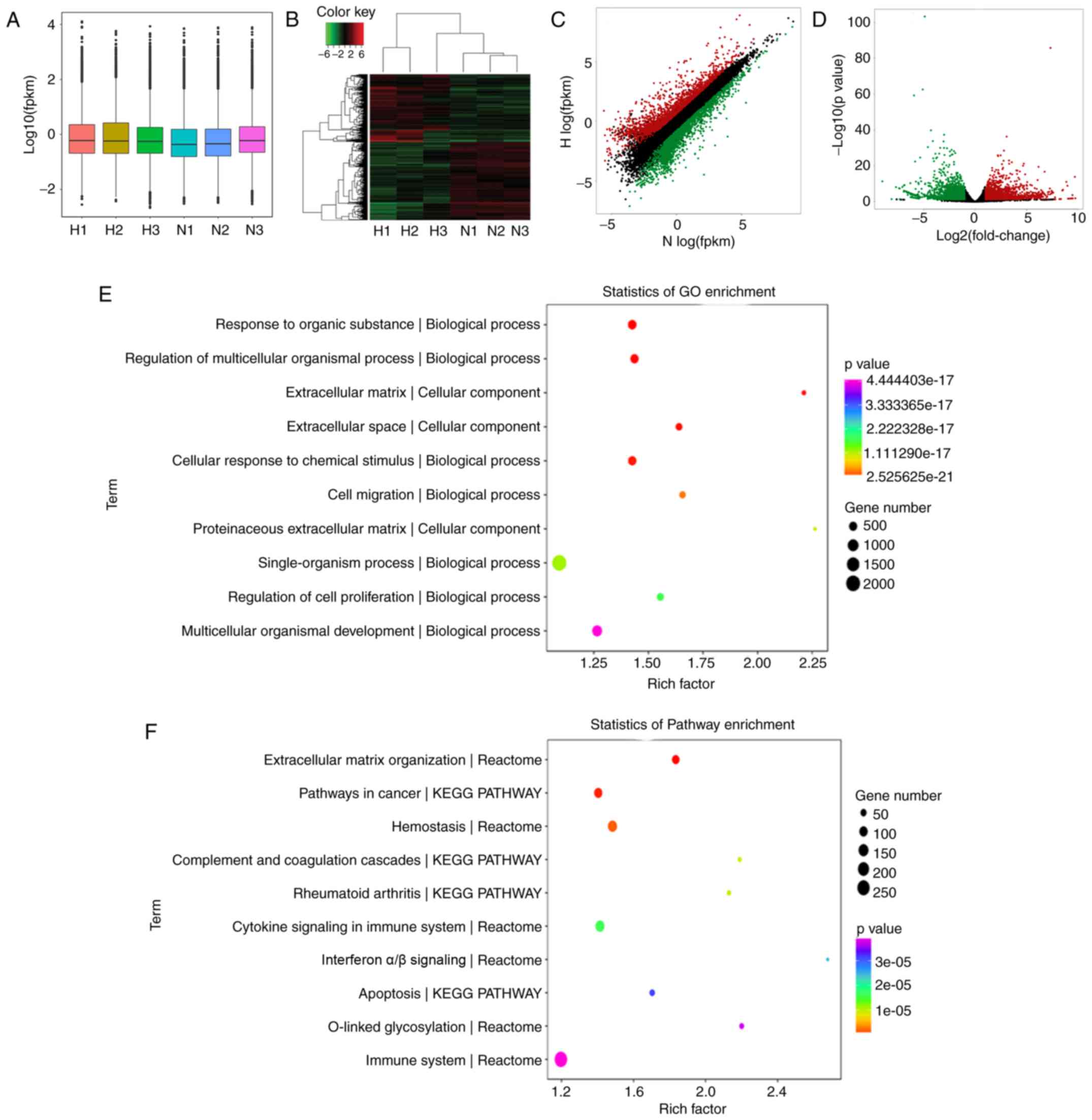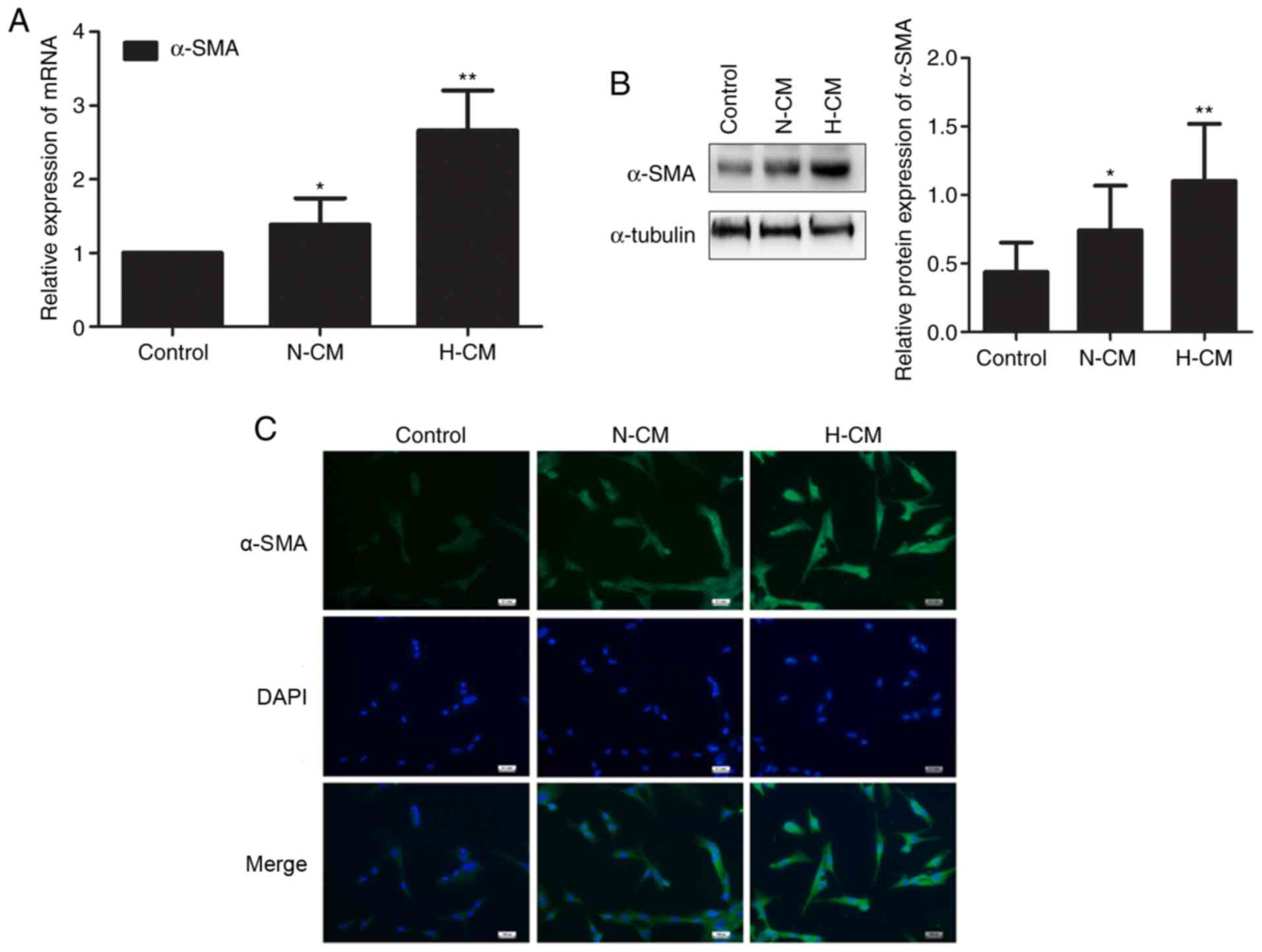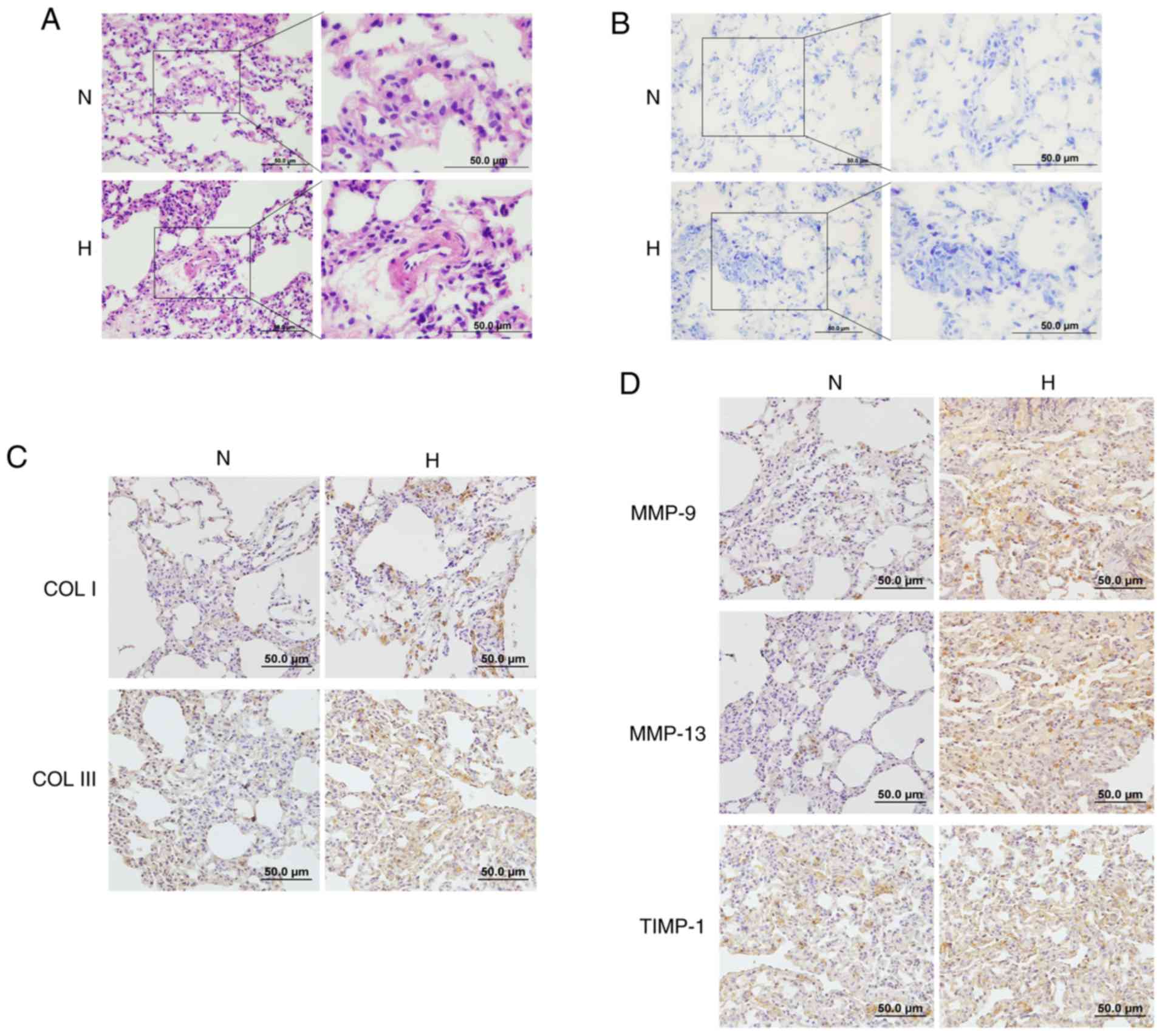|
1
|
Grimminger J, Ghofrani HA, Weissmann N,
Klose H and Grimminger F: COPD-associated pulmonary hypertension:
Clinical implications and current methods for treatment. Exp Rev
Respir Med. 10:755–766. 2016. View Article : Google Scholar
|
|
2
|
Wang Z and Chesler NC: Pulmonary vascular
mechanics: Important contributors to the increased right
ventricular afterload of pulmonary hypertension. Exp Physiol.
98:1267–1273. 2013. View Article : Google Scholar : PubMed/NCBI
|
|
3
|
Nakagawa Y, Kishida K, Kihara S, Funahashi
T and Shimomura I: Adiponectin ameliorates hypoxia-induced
pulmonary arterial remodeling. Biochem Biophys Res Commun.
382:183–188. 2009. View Article : Google Scholar : PubMed/NCBI
|
|
4
|
Thenappan T, Ormiston ML, Ryan JJ and
Archer SL: Pulmonary arterial hypertension: Pathogenesis and
clinical management. BMJ. 360:j54922018. View Article : Google Scholar : PubMed/NCBI
|
|
5
|
Sluiter I, van Heijst A, Haasdijk R,
Kempen MB, Boerema-de Munck A, Reiss I, Tibboel D and Rottier RJ:
Reversal of pulmonary vascular remodeling in pulmonary hypertensive
rats. Exp Mol Pathol. 93:66–73. 2012. View Article : Google Scholar : PubMed/NCBI
|
|
6
|
Di Wang H, Ratsep MT, Chapman A and Boyd
R: Adventitial fibroblasts in vascular structure and function: The
role of oxidative stress and beyond. Canadian J Physiol Pharmacol.
88:177–186. 2010. View
Article : Google Scholar
|
|
7
|
Lerner CA, Rutagarama P, Ahmad T, Sundar
IK, Elder A and Rahman I: Electronic cigarette aerosols and copper
nanoparticles induce mitochondrial stress and promote DNA
fragmentation in lung fibroblasts. Biochem Biophys Res Commun.
477:620–625. 2016. View Article : Google Scholar : PubMed/NCBI
|
|
8
|
Chai X, Sun D, Han Q, Yi L, Wu Y and Liu
X: Hypoxia induces pulmonary arterial fibroblast proliferation,
migration, differentiation and vascular remodeling via the
PI3K/Akt/p70S6K signaling pathway. Int J Mol Med. 41:2461–2472.
2018.PubMed/NCBI
|
|
9
|
Marsh LM, Jandl K, Grunig G, Foris V,
Bashir M, Ghanim B, Klepetko W, Olschewski H, Olschewski A and
Kwapiszewska G: The inflammatory cell landscape in the lungs of
patients with idiopathic pulmonary arterial hypertension. Eur
Respir J. 51:pii: 1701214. 2018. View Article : Google Scholar
|
|
10
|
Kosanovic D, Dahal BK, Peters DM, Seimetz
M, Wygrecka M, Hoffmann K, Antel J, Reiss I, Ghofrani HA, Weissmann
N, et al: Histological characterization of mast cell chymase in
patients with pulmonary hypertension and chronic obstructive
pulmonary disease. Pulm Circ. 4:128–136. 2014. View Article : Google Scholar : PubMed/NCBI
|
|
11
|
Yang Y, Zhang Z, Zhang H, Hong K, Tang W,
Zhao L, Lin H, Liu D, Mao J, Wu H and Jiang H: Effects of maternal
acrolein exposure during pregnancy on testicular testosterone
production in fetal rats. Mol Med Rep. 16:491–498. 2017. View Article : Google Scholar : PubMed/NCBI
|
|
12
|
Kasmi El KC, Pugliese SC, Riddle SR, Poth
JM, Anderson AL, Frid MG, Li M, Pullamsetti SS, Savai R, Nagel MA,
et al: Adventitial fibroblasts induce a distinct
proinflammatory/profibrotic macrophage phenotype in pulmonary
hypertension. J Immunol. 193:597–609. 2014. View Article : Google Scholar
|
|
13
|
Mukai K, Tsai M, Saito H and Galli SJ:
Mast cells as sources of cytokines, chemokines, and growth factors.
Immunol Rev. 282:121–150. 2018. View Article : Google Scholar : PubMed/NCBI
|
|
14
|
Shi GP, Bot I and Kovanen PT: Mast cells
in human and experimental cardiometabolic diseases. Nat Rev
Cardiol. 12:643–658. 2015. View Article : Google Scholar : PubMed/NCBI
|
|
15
|
Ko SC, Lee DS, Park WS, Yoo JS, Yim MJ,
Qian ZJ, Lee CM, Oh J, Jung WK and Choi IW: Anti-allergic effects
of a nonameric peptide isolated from the intestine gastrointestinal
digests of abalone (Haliotis discus hannai) in activated HMC-1
human mast cells. Int J Mol Med. 37:243–250. 2016. View Article : Google Scholar : PubMed/NCBI
|
|
16
|
Pugliese SC, Poth JM, Fini MA, Olschewski
A, El Kasmi KC and Stenmark KR: The role of inflammation in hypoxic
pulmonary hypertension: From cellular mechanisms to clinical
phenotypes. Am J Physiol Lung Cell Mol Physiol. 308:L229–L252.
2015. View Article : Google Scholar :
|
|
17
|
Moiseeva EP, Roach KM, Leyland ML and
Bradding P: CADM1 is a key receptor mediating human mast cell
adhesion to human lung fibroblasts and airway smooth muscle cells.
PLoS One. 8:e615792013. View Article : Google Scholar : PubMed/NCBI
|
|
18
|
Zhu YJ, Kradin R, Brandstetter RD, Staton
G, Moss J and Hales CA: Hypoxic pulmonary hypertension in the mast
cell-deficient mouse. J Appl Physiol Respir Enviroc Exerci Physiol.
54:680–686. 1983.
|
|
19
|
Hoffmann J, Yin J, Kukucka M, Yin N,
Saarikko I, Sterner-Kock A, Fujii H, Leong-Poi H, Kuppe H,
Schermuly RT and Kuebler WM: Mast cells promote lung vascular
remodelling in pulmonary hypertension. Eur Respir J. 37:1400–1410.
2011. View Article : Google Scholar
|
|
20
|
Gulliksson M, Carvalho RF, Ulleras E and
Nilsson G: Mast cell survival and mediator secretion in response to
hypoxia. PLoS One. 5:e123602010. View Article : Google Scholar : PubMed/NCBI
|
|
21
|
Vajner L, Vytásek R, Lachmanová V, Uhlík
J, Konrádová V, Novotná J, Hampl V and Herget J: Acute and chronic
hypoxia as well as 7-day recovery from chronic hypoxia affects the
distribution of pulmonary mast cells and their MMP-13 expression in
rats. Int J Exp Pathol. 87:383–391. 2006. View Article : Google Scholar : PubMed/NCBI
|
|
22
|
Breitling S, Hui Z, Zabini D, Hu Y,
Hoffmann J, Goldenberg NM, Tabuchi A, Dos Santos C and Kuebler WM:
The mast cell-B cell axis in lung vascular remodeling and pulmonary
hypertension. Am J Physiol Lung Cell Mol Physiol. 312:L710–L721.
2017. View Article : Google Scholar : PubMed/NCBI
|
|
23
|
Bartelds B, van Loon RLE, Mohaupt S,
Wijnberg H, Dickinson MG, Boersma B, Takens J, van Albada M and
Berger RMF: Mast cell inhibition improves pulmonary vascular
remodeling in pulmonary hypertension. Chest. 141:651–660. 2012.
View Article : Google Scholar
|
|
24
|
Haurani MJ and Pagano PJ: Adventitial
fibroblast reactive oxygen species as autacrine and paracrine
mediators of remodeling: Bellwether for vascular disease? Cardiovas
Res. 75:679–689. 2007. View Article : Google Scholar
|
|
25
|
Stenmark KR, Gerasimovskaya E, Nemenoff RA
and Das M: Hypoxic activation of adventitial fibroblasts: Role in
vascular remodeling. Chest. 122(6 Suppl): S326–S334. 2002.
View Article : Google Scholar
|
|
26
|
Wygrecka M, Dahal BK, Kosanovic D,
Petersen F, Taborski B, von Gerlach S, Didiasova M, Zakrzewicz D,
Preissner KT, Schermuly RT and Markart P: Mast cells and
fibroblasts work in concert to aggravate pulmonary fibrosis: Role
of transmembrane SCF and the PAR-2/PKC-alpha/Raf-1/p44/42 signaling
pathway. Am J Pathol. 182:2094–2108. 2013. View Article : Google Scholar : PubMed/NCBI
|
|
27
|
Short M, Nemenoff RA, Zawada WM, Stenmark
KR and Das M: Hypoxia induces differentiation of pulmonary artery
adventitial fibroblasts into myofibroblasts. Am J Physiol Cell
Physiol. 286:C416–C425. 2004. View Article : Google Scholar
|
|
28
|
Farkas L, Gauldie J, Voelkel NF and Kolb
M: Pulmonary hypertension and idiopathic pulmonary fibrosis: A tale
of angiogenesis, apoptosis, and growth factors. Am J Respir Cell
Mol Biol. 45:1–15. 2011. View Article : Google Scholar
|
|
29
|
Thenappan T, Chan SY and Weir EK: Role of
extracellular matrix in the pathogenesis of pulmonary arterial
hypertension. Am J Physiol Heart Circ Physiol. 315:H1322–H1331.
2018. View Article : Google Scholar : PubMed/NCBI
|
|
30
|
Liu P, Yan S, Chen M, Chen A, Yao D, Xu X,
Cai X, Wang L and Huang X: Effects of baicalin on collagen Iota and
collagen IotaIotaIota expression in pulmonary arteries of rats with
hypoxic pulmonary hypertension. Int J Mol Med. 35:901–908. 2015.
View Article : Google Scholar : PubMed/NCBI
|
|
31
|
Estrada KD and Chesler NC:
Collagen-related gene and protein expression changes in the lung in
response to chronic hypoxia. Biomech Model Mechanobiol. 8:263–272.
2009. View Article : Google Scholar :
|
|
32
|
Wang Z, Schreier DA, Abid H, Hacker TA and
Chesler NC: Pulmonary vascular collagen content, not cross-linking,
contributes to right ventricular pulsatile afterload and overload
in early pulmonary hypertension. J Appl Physiol (1985).
122:253–263. 2017. View Article : Google Scholar :
|
|
33
|
Safdar Z, Tamez E, Frost A, Guffey D,
Minard CG and Entman ML: Collagen metabolism biomarkers and health
related quality of life in pulmonary arterial hypertension. Int J
Cardiovas Res. 4:2015.
|
|
34
|
George J and D'Armiento J: Transgenic
expression of human matrix metalloproteinase-9 augments
monocrotaline-induced pulmonary arterial hypertension in mice. J
Hypertens. 29:299–308. 2011. View Article : Google Scholar
|
|
35
|
Safdar Z, Tamez E, Chan W, Arya B, Ge Y,
Deswal A, Bozkurt B, Frost A and Entman M: Circulating collagen
biomarkers as indicators of disease severity in pulmonary arterial
hypertension. JACC Heart Fail. 2:412–421. 2014. View Article : Google Scholar : PubMed/NCBI
|





















